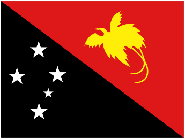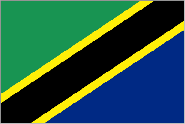Unspecified
Taxonomy Term List
Advancing Papua New Guinea’s National Adaptation Plan
The project aims to mainstream climate change into planning and policy frameworks and increase awareness amongst key stakeholders at national and subnational levels. The project supports the country’s Climate Change (Management) Act by strengthening existing frameworks and systems, enhancing the capacities of key stakeholders to effectively contribute to the adaptation planning process, and establishing a mechanism to sustain the process beyond the life of the project. The National Adaptation Plan (NAP) takes a phased approach to implementation, with the first phase focusing on four priority sectors: agriculture, health, transport, and infrastructure. Cross-cutting priority areas also aim to enable the effective and sustained implementation of climate change adaptation strategies and measures by addressing policy, institutional, coordination and technical barriers with a whole-of-society approach.
Under the UNFCCC process, Papua New Guinea’s first National Adaptation Plan (NAP) provides a strategic framework to support country-driven efforts to effectively mainstream adaptation to climate-induced risks within sectoral planning processes. The NAP takes a phased approach to implementation that considers the institutional frameworks, and the first phase focuses on priority sectors: agriculture, health, transport, and infrastructure. By defining a series of strategic actions under cross-cutting and sectoral areas that seek to facilitate the operationalization of the NAP and guide the country’s efforts to achieve Papua New Guinea’s adaptation targets by 2030 through a gender-responsive and whole-of-society approach.
The "Advancing Papua New Guinea’s National Adaptation Plan" project is aimed at strengthening institutional and technical capacities for iterative development of a NAP and integration of climate change adaptation into national and subnational planning and budgeting processes in Papua New Guinea. To achieve this, the project has informed results under three outcomes: 1) Strengthened coordination mechanism for multi-sectoral adaptation planning and implementation at different levels, 2) Integration of climate change risks into key national and sectoral policies and formulation of a National Adaptation Plan, and 3) Establishment of a financing framework for climate change adaptation action for medium-to long-term. This phase of the project has focused on four priority sectors – agriculture, health, transport, and infrastructure, along with cross-cutting areas. A second phase of the project is expected to address gaps in the remaining five priority sectors, in addition to addressing gaps in regulatory frameworks and the evidence base.
Project rationale
Papua New Guinea is highly vulnerable to climate change and is among the ten countries with the highest disaster risk worldwide (World Risk Index, 2021). Papua New Guinea is experiencing increased climate variability through changes in temperature and precipitation, increased intensity of tropical storms, increased coastal erosion and saline intrusion and inundation caused by sea-level rise. Climate change has already begun to cause considerable impact in Papua New Guinea, triggering climate-related hazards, such as heatwaves, landslides, storms, and floods, alongside slow-onset impacts of increased disease and droughts. These impacts have caused substantial damage and affect the daily lives and livelihoods of the nation.
Building resilience to climate change has featured in the national dialogue and political commitments for over a decade. Recognized as an acute challenge for the country, the Government and partners have committed to mainstream climate action in their planning and delivery. Major policy initiatives such as the Vision 2050 and the National Strategy for Responsible Sustainable Development and legislation such as the Climate Change (Management) Act (CCMA) have broadened efforts to include better natural resource management, conservation and sustainable growth. Growing legal architecture has supported these efforts. Papua New Guinea’s geography, its economic base, its exposure to external shocks and limited capacity across the Government, however, make these challenges difficult to address.
Project results
The project has delivered the following results under the three Outcomes.
Outcome 1: The coordination mechanism for multi-sectoral adaptation planning and implementation at different levels is strengthened.
- Reviewed legal and policy barriers to the integration of climate change into development planning
- Developed capacities of the CCDA to steer the climate change coordination and integration process
- Strengthened mechanisms for regularly reviewing and updating adaptation priorities.
Outcome 2: Climate change risks are integrated into key national and sectoral policies and the NAP is formulated.
- Established a system for economic analysis and appraisal of priority adaptation options and integrate climate change adaptation priority interventions into the Environment Act, National Disaster Mitigation Policy and MTDP3, and sector-specific policies in Agriculture, Health, Infrastructure and Transport
- Formulated the NAP with a specific focus on Agriculture, Health, Infrastructure and Transport sectors, as well as cross-cutting areas.
Outcome 3: Financing framework for climate change adaptation action in medium-to long-term is established
- Developed a NAP financing and investment strategy, including the development of four sector-specific idea notes on priority adaptation interventions to feed into Papua New Guinea’s country programme under the GCF Readiness project.
Outcome 1: The coordination mechanism for multi-sectoral adaptation planning and implementation at different levels is strengthened.
Outcome 2: Climate change risks are integrated into key national and sectoral policies and NAP is formulated.
Outcome 3: Financing framework for climate change adaptation action for medium-to long-term is established.
Momase Region Consultation Workshop (2021)
Exposure: Advancing together in the Asia Pacific (2021)
Southern Region Consultation Workshop (2021)
National Consultation Workshop (2021)
CCDA EMTV (Television Station) Story (2021)
Southern & Highlands Region Combined Adaptation Planning Training (2022)
Momase Region Adaptation Planning Training (2022)
New Guinea Islands Region Adaptation Planning Training (2022)
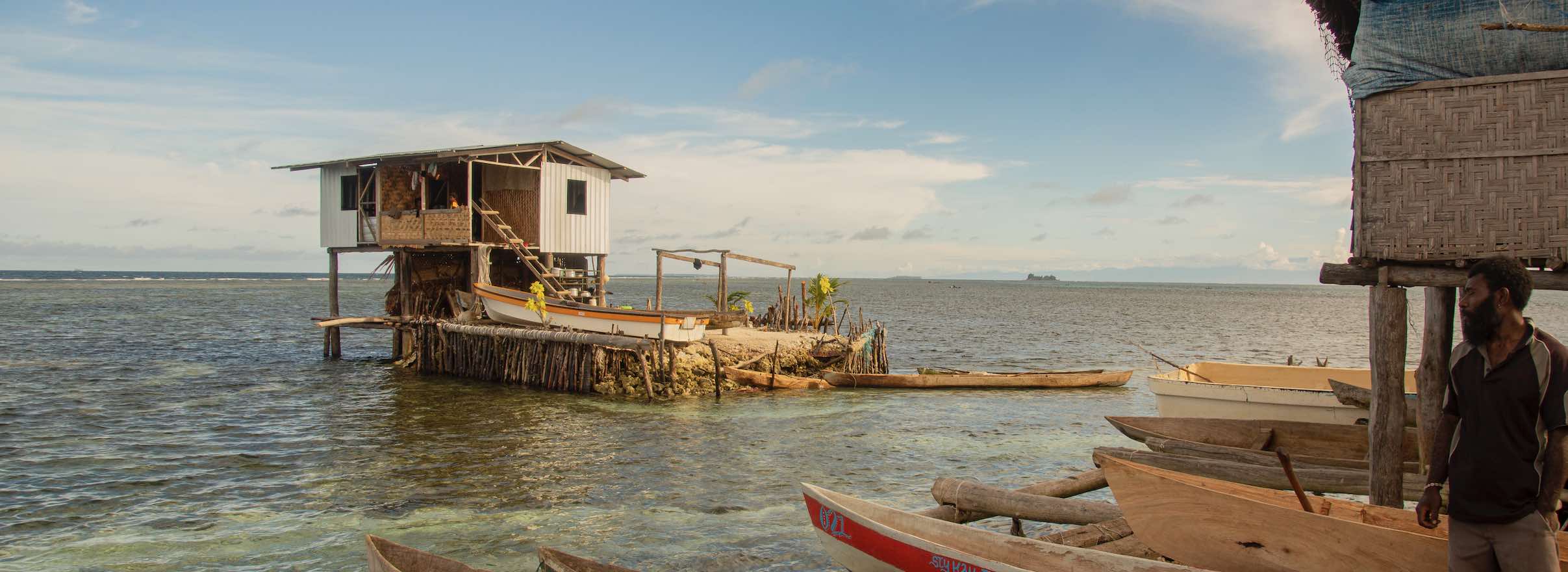

NAP-2: Advancing Moldova’s National Climate Change Adaptation Planning process
Funded by the Green Climate Fund (GCF) Readiness Programme, the "NAP-2: Advancing Moldova’s National Climate Change Adaptation Planning Process" project is supporting the Government of Moldova to develop the country’s national development plan for climate change adaptation. The project aims to 1) strengthen and operationalize the national steering mechanism for climate change adaptation, 2) improve the long-term capacity for planning and implementation of adaptation actions through CCA technologies; and 3) improve the mainstreaming of climate change adaptation in priority sectors through the increased alignment of national development priorities.
The project aims to address the barriers to prioritizing national investments in climate change adaptation and increase the human and financial capacity for the implementation of the priority actions identified during the NAP-1 project, including those that will emerge under this NAP-2 initiative. To accomplish this overall goal, the project activities have been designed to address the gaps and barriers also identified in the NAP-1 and the Stocktaking Report. Through the NAP process, Moldova is realizing a long-term paradigm shift towards climate resilience in its national and sectoral development planning.
The Government of Moldova sees the National Adaptation Planning (NAP) process as a key to achieving the adaptation objectives outlined in its 2014 Climate Change Adaptation Strategy and its Nationally Determined Contributions (NDC), as well as the continued mainstreaming of climate change considerations into its policies and budgeting processes. The NAP process was launched in 2014 through consultations with national stakeholders with the support of the Austrian Development Agency (ADA) and UNDP.
Over the last decade, the Republic of Moldova has experienced several extreme events, such as droughts and major floods. These events, coupled with the gradual impacts of rising average temperatures and uneven precipitation patterns throughout the year, have adversely affected the country's economy and the well-being and health of its population. Severe droughts are recurring more frequently causing significant economic losses. In 2007 and 2012, droughts resulted in estimated losses of approximately USD 1 billion and USD 400 million, affecting 80% of the rural population. Meanwhile, flood damages in 2008 and 2010 are estimated at around USD 120 million and USD 42 million, respectively. Climate projections suggest a continued rise in average temperatures and an additional 12 days with zero precipitation, posing ongoing challenges for the country.
In addition to the key implementing partner, the Ministry of Environment, other project partners include the Ministry of Infrastructure and Regional Development, Ministry of Energy, Ministry of Finance, Ministry of Health, and the National Commission on Climate Change.
Expected results:
- National Climate Change Adaptation Strategy updated with the NAP-2 overarching goal and sector-specific adaptation objectives articulated in the Climate Change Adaptation Action Plans of health and forestry sectors, and in the Development Action Plans of the transport, energy and building sectors.
- Monitoring and Evaluation system with improved data analysis to support decision-making developed.
- Climate Change Adaptation Capacity Development Plan updated and adopted by the five key sectors.
- Climate change information and knowledge management portal that supports the NAP process and mainstreaming of climate change adaptation considerations launched.
- Adaptation Plans for seven district towns developed.
- Technology Roadmap for each key sector (transport, energy, water, forestry and health) developed based on Technology Needs Assessment.
- 5 investment project ideas developed to be submitted to Green Climate Fund.
Project updates
The NAP-2 project actively engages with the Minister of Environment and key stakeholders, facilitating ongoing discussions on project activities, accomplishments, and challenges. Recognizing the need for a coordinated approach to climate change activities, the Ministry of Environment requested an analysis of the existing regulatory framework, aiming to identify gaps and propose operational coordination mechanisms. This effort has involved exploring options to upgrade the National Commission on Climate Change (NCCC), with potential integration with other bodies such as the National Council on Sustainable Development or the National Commission on Emergency Situations.
The National Climate Change Adaptation Programme (NCCAP) until 2030 and its Action Plan, approved by the Government on 30 August 2023, has been developed in a participatory manner that supports the alignment of the national adaptation goals with the aims of the Paris Agreement in transport, energy, water, forest, and health sectors. Guidelines and tools for conducting Climate Change Impact, Vulnerability, and Risk Assessments (CCIVRA) at sector and organization levels have been developed. The project has ensured that these tools are not only comprehensive but also user-friendly. Additionally, a Monitoring and Evaluation (M&E) framework for the NAP process has been devised.
The project has delivered the Climate Change Capacity Development Plan (CDP) which lays the foundation for strengthening institutional capacities to mainstream climate change considerations into sectorial policies and implementation of the policies. This has involved consultations to define sector-specific adaptation targets and integrating them into sectorial development plans. In addition, the Climate Change Knowledge Management Roadmapwas developed which provides a better understanding of the national capacities needed to produce, collect, and use climate change information and knowledge. This forms the foundation for the Climate Change Information and Knowledge Management Platform, a one-stop shop for all climate-related information under development.
The project has supported the assessment of the meteorological and hydrological network which enabled the State Hydro-meteorological Service of Moldova (SHS) to seek further support from Sweden, World Bank and Meteo-France International in terms of data digitalization and improving meteorological and hydrological monitoring. Market research was finalized for the introduction of new climate services and increasing awareness of the importance of hydrometeorological and climate services. Moreover, the SHS has developed the Law and Regulation on hydrometeorological activity and methodology for calculating tariffs for climate services.
Regarding the technology needs assessment (TNA), the ‘Identification and prioritization of adaptation sectoral technologies’ and ‘the Barrier Analysis and Enabling Framework of TNA analysis’ were conducted involving relevant stakeholders from the five priority sector Working Groups (water, transport, energy, forestry, health). As a result, 115 technology fact sheets (TFS) as well as elaborated versions of the 53 TFS were produced and measures to overcome barriers were identified.
Other recent activities have included further consultations on improving coordination mechanisms, creating a training curriculum and master's course on climate change adaptation in the health sector, and developing the NAP-3 project document, including a roadmap and financing plan. Furthermore, other activities have involved training, data collection methodologies, aligning national codes with EU standards, and supporting the Ministry of Infrastructure and Regional Development with construction standards/codes for at-risk assets in the transport and construction sectors.
The project objectives will be achieved through three outcomes, focusing on strengthening national capacities for mainstreaming climate change adaptation considerations, producing actionable climate risks and vulnerability assessments, and implementing effective methods, tools, and information systems to better inform decision-making on climate risks. The three outcomes build on each other in a progressive and interrelated approach that strengthens the national conditions for adaptation.
Outcome 1: National steering mechanism for climate change adaptation strengthened and operationalized
Outcome 2: Long-term capacity on planning and implementation of adaptation actions improved
Outcome 3: Mainstreaming of climate change adaptation is improved through the increased alignment of national development priorities, in the priority sectors (forestry, health, energy and transport).


Advancing the National Adaptation Plan of Papua New Guinea
Country background, Sustainable Development Goals and Paris Agreement
How has the NAP-GSP supported to date?
|
Supported a stocktaking activity
|
In June-July 2017, the NAP-GSP supported the government with a stocktaking of the current climate change adaptation initiatives. Through desk reviews of existing documentation, policies and strategies and, an assessment of relevant initiatives on climate mainstreaming and of the institutional framework and capacities relevant to the NAP process was conducted.
|
|
Production of a Stocktaking Report
|
Based on the desk research, a Stocktaking Report was produced. The findings were validated through a stakeholder consultation mission and a two-day training workshop on the NAP process, that took place in Port Moresby during 9-10 August 2017.
|
|
Helped build capacity and facilitated access to additional climate finance
|
From August 2017, with UNDP and NAP-GSP support, the government of PNG began preparing a Readiness and Preparatory Support Proposal to submit to the Green Climate Fund (GCF), outlining a NAP project for potential funding. The initial submission of the - Advancing Papua New Guinea’s National Adaptation Plan – project outlined in the Readiness proposal was made in October 2017. The proposal focuses on strengthening a mechanism for multi-sectoral coordination at various levels of government to integrate climate risks in development planning and establishing a financing framework for climate adaptation for medium-to long-term.
|
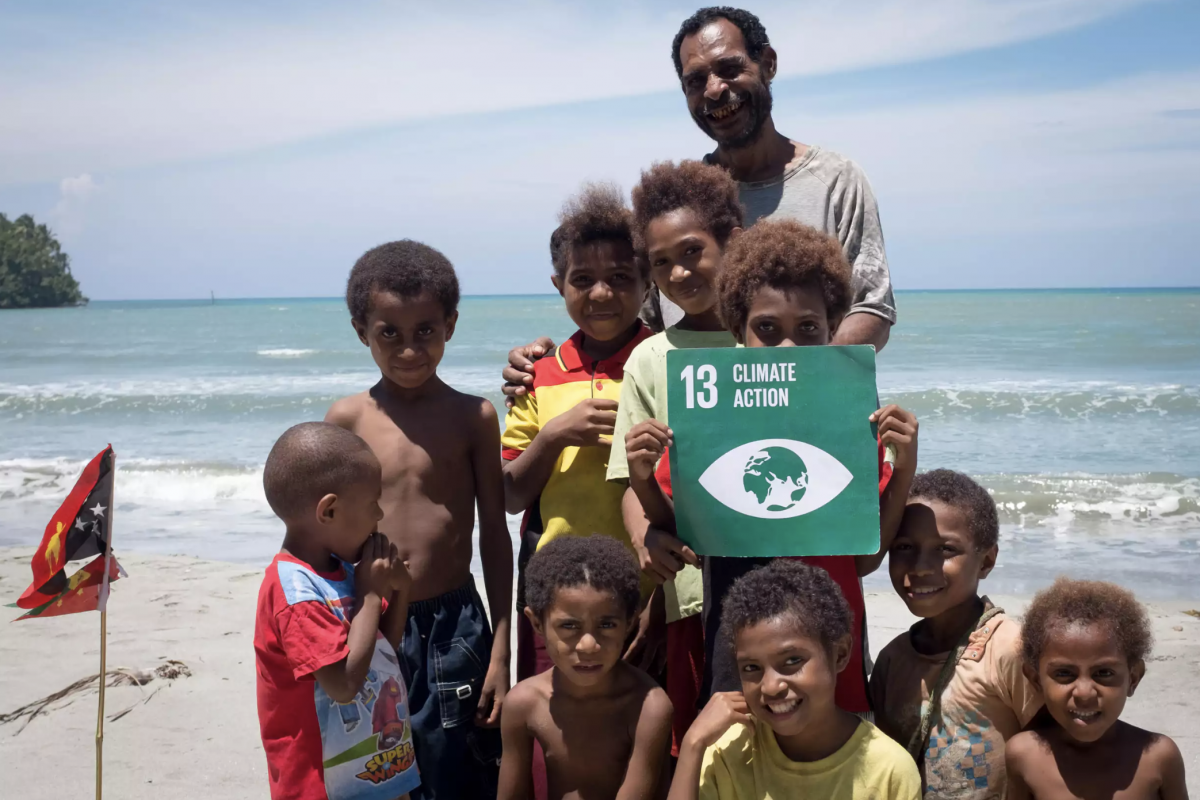
Advancing the National Adaptation Plan of Papua New Guinea
Country background, Sustainable Development Goals and Paris Agreement
How has the NAP-GSP supported to date?
|
Supported a stocktaking activity
|
In June-July 2017, the NAP-GSP supported the government with a stocktaking of the current climate change adaptation initiatives. Through desk reviews of existing documentation, policies and strategies and, an assessment of relevant initiatives on climate mainstreaming and of the institutional framework and capacities relevant to the NAP process was conducted.
|
|
Production of a Stocktaking Report
|
Based on the desk research, a Stocktaking Report was produced. The findings were validated through a stakeholder consultation mission and a two-day training workshop on the NAP process, that took place in Port Moresby during 9-10 August 2017.
|
|
Helped build capacity and facilitated access to additional climate finance
|
From August 2017, with UNDP and NAP-GSP support, the government of PNG began preparing a Readiness and Preparatory Support Proposal to submit to the Green Climate Fund (GCF), outlining a NAP project for potential funding. The initial submission of the - Advancing Papua New Guinea’s National Adaptation Plan – project outlined in the Readiness proposal was made in October 2017. The proposal focuses on strengthening a mechanism for multi-sectoral coordination at various levels of government to integrate climate risks in development planning and establishing a financing framework for climate adaptation for medium-to long-term.
|

Integrating Climate Change Adaptation into Tanzania’s Planning Processes
The project aims to strengthen Tanzania’s adaptive and resilience capacities. By proposing the three inter-connected outcomes focusing on enhancing governance and coordination on adaptation planning, strengthening evidence base to design implementable solutions, and developing a costed national adaptation plan and concept notes, this project helps to overcome the overall problem of inadequate integration of climate risks and adaptation measures in Tanzania’s national and sectorial development plans. As a result of the project activities, a comprehensive nationwide evidence-based vulnerability assessment will be generated to help design adaptation solutions, a robust financing strategy will be developed, and three concept notes will be prepared to seek further funding from the Green Climate Fund (GCF) to address priority adaptation measures in various sectors.
The project “Integrating Climate Change Adaptation into Tanzania’s Planning Processes” was launched in August 2021 with the main objective to strengthen Tanzania’s adaptive and resilience capacities by facilitating the integration of climate change adaptation planning processes. This objective will be achieved through the following three outcomes: strengthening adaptation planning governance and institutional coordination, improving evidence base for designing adaptation solutions, and developing a national adaptation plan (NAP).
Rising temperatures, longer dry spells, more intense rainfall and sea level rise make Tanzania the 26th most vulnerable country to climate risks. More than 70% of the natural disasters in Tanzania are climate change related and are linked to recurrent droughts and floods (NDC 2021). Several climate change vulnerability studies have been undertaken in the country, however, they covered only few parts of the territory. A stocktaking exercise undertaken in 2018 has identified the following gaps and barriers to the adaptation planning process: (1) a lack of an effective national institutional framework for integrating climate risks and adaptation measures into planning, (2) a lack of information on climate risks and vulnerabilities, (3) a lack of capacity at different levels, and (4) absence of clear linkages between NAP and NDCs. In an effort to deal with climate change, the Government has initiated several foundational policies and initiatives to address climate impacts and support the development of a NAP process. These include a National Climate Change Strategy (2012), the Zanzibar Climate Change Strategy (2014), Climate Change Adaptation Plans for Water (2012) and Agriculture (2014). However, despite these policies and initiatives, climate change adaptation planning and implementation are still in the early stages of development.
This project addresses the identified gaps and barriers and aims to overcome the overall problem of inadequate integration of climate risks and adaptation measures in Tanzania’s national and sectorial development plans. Outcomes 1 and 2 address the barriers related to limited coordination, lack of information, limited capacity and lack of a financing strategy. Outcome 3, designed to overcome the barriers related to lack of financing strategy, weak linkages in policymaking and lack of capacity and coordination, will be dependent on the results of both outcomes 1 and 2. Through key activities grouped around the three outcomes, the project aims to deliver the following results:
- build capacities and empower the coordination mechanism to internalize the process within the country’s development planning and budgeting cycles;
- embed climate change and specifically adaptation as part of the national M&E system;
- develop tools and methodologies for current and future climate risks assessments;
- establish a national financing mechanism for climate change and widen resource mobilization scope through encouraging public private partnerships and involving other domestic, regional and international partners, CSOs, and financial institutions.
Project updates
In its updated NDC (2021), Tanzania has committed to promote effective adaptation measures, including in the priority areas such as access to clean water, sustainable livelihoods and climate-smart rural electrification. The NAP project Inception meeting and the first Project Steering Committee meeting to validate the annual work plan took place in September 2022. Considering the importance of the NDC implementation and the NAP alignment for the country, key stakeholders are aiming to collaborate closely on fast-track implementation of the NAP project.
Outcome 1: Adaptation planning governance and institutional coordination strengthened.
Outcome 2: Evidence base for designing adaptation solutions strengthened.
Outcome 3: A national adaptation plan developed and validated.
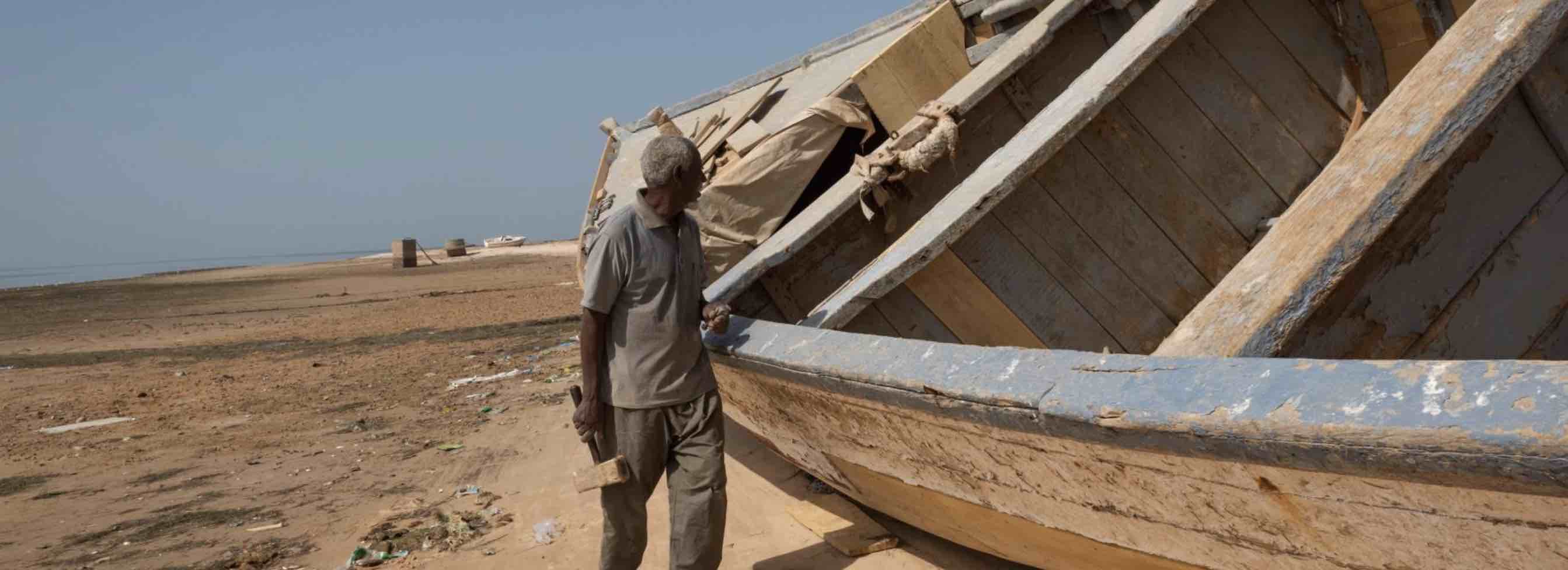
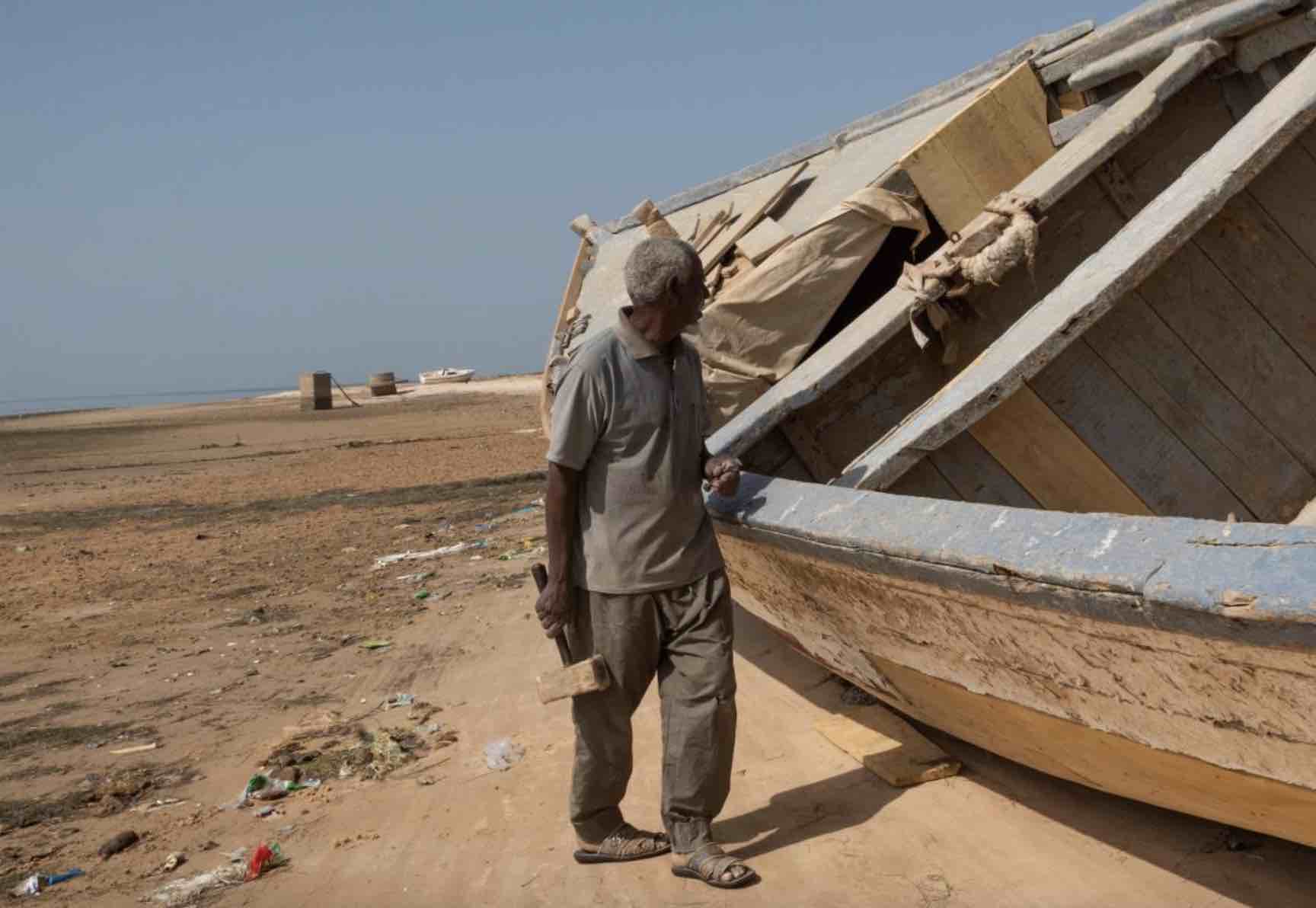
Supporting Chad to advance their NAP process
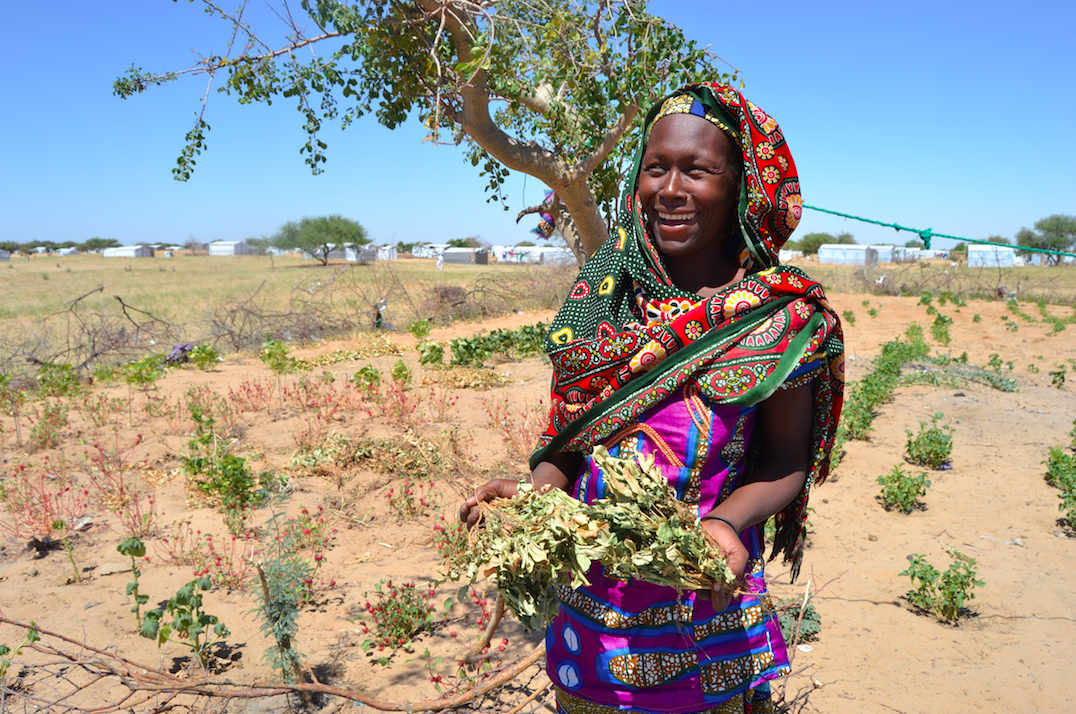
Country background, Sustainable Development Goals and Paris Agreement
The Republic of Chad is located in north-central Africa and is dominated by the Saharan desert, covering half of its 1,284,634 km2. The Sahelian ecological zone runs through the center of the country, and is characterized by poor soils and scrubland. In the south, the wetter Sudanian savanna zone is dominated by forest and wooded savannah. The country’s unique position within the Middle Africa region aligns it with both the Congo Basin and the Sahel (as a member of both the Central African Forests Commission and the Permanent Interstate Committee for Drought Control in the Sahel). Landlocked, the country is home to about 15.4 million people (2018 estimate), with only 28 percent of the population lives in urban areas.
According to the IPCC, Chad is projected to experience a moderate increase in temperature of between 0.6 and 1.3 Celsius (under a medium warming scenario) by 2023 and 1 to 2.5 Celsius of warming expected by 2050. It is expected that the number of “hot” days and nights will increase, while there will be a decrease in the number of “cold” days and nights. With respect to precipitation changes, model simulations for the Sahel remain widely divergent; some models estimate that mean annual precipitation could decrease by up to 28 percent, while others suggest that it could increase by up to 29 percent by the 2090s. A significant increase in extreme rainfall events (greater than 50 mm in the maximum five-day precipitation) has also been projected—a change that could increase runoff and flooding conditions.
In September 2015, Chad submitted its Nationally Determined Contribution to the UNFCCC. In order to provide a better living environment for Chadians, the government has drawn up "Vision 2030, the Chad we want," which is broken down into three national development plans. The first, covering the period 2017-2021. Chad, through its commitment, will pursue efforts to reduce social inequalities and improve the wellbeing of populations, protect the environment and economic diversification. In response to these expected climate change impacts, the United Nations Development Programme is working with the Government of Chad to implement The Chad National Adaptation Plan Advancement Project is intended to integrate climate change adaptation into medium- and long-term planning and budgeting of climate-sensitive sectors. Chad’s NAP will be anchored in the Chadian Vision 2030 and contribute to the effective integration of adaptation. It incorporates priorities including new productive capabilities and opportunities for the creation of decent work, the development of human capital, the fight against desertification, environmental protection, and adaptation to climate change and improved governance. Under the first component in the NAP, it includes the development of integrated information systems and a climate and socioeconomic database, the project will support planning and decision-making based on scientific evidence. As a result, Chad will be endowed with a national framework able to produce forecasts and assess the vulnerability of production systems to the adverse effects of climate change. In addition, Chad is receiving support from UN Environment to access funding from the Green Climate Fund on adaptation planning.
How has the NAP-GSP supported to date?
|
Supported the NAP regional workshop |
In 2014, Chad attended the NAP-GSP Francophone Africa Regional Training Workshop, Addis Ababa, Ethiopia to share best practices from countries in the region. Key stakeholders from Chad identified six barriers for implementing the NAP during the project-planning meeting held on 26 May 2017 in N'Djamena.
|
|
Supported the formulation of a Roadmap |
In Chad, a basic need for analysis was identified, the NAP GSP supported Chad carry out the preparations for a road map for conducting the NAP process.
|
|
Helped build capacity for accessing climate financing for launch of NAP
|
The government of Chad launched their NAP project at the end of 2019. The NAP project is implemented by the Ministry of the Environment and Fisheries in Chad and is funded through the Global Environment Facility LDC Fund. It was developed with the support of the NAP-GSP. |
Vers une atténuation et une acclimatation du Tchad aux effets du changement climatique
Le Plan National d’Adaptation au changement climatique (PNA) opérationnel dans la zone méridionale - February 2020 - Permettez-moi de remercier l’équipe du PNA pour avoir lancer le projet dans la zone soudanienne et de proposer cette formation sur le changement climatique. Pendant longtemps, on a pensé que le changement climatique est une affaire des autres et qu’on ne peut pas être touché. On s’est rendu compte maintenant que le changement climatique est un phénomène réel qui affecte tout le monde.
Lancement du « Plan National d’Adaptation aux changements climatiques » - Octobre 2019 - Le PNUD et le Ministère de l’Environnement, de l’Eau et de la Pêche, ont lancé officiellement le projet « Plan National d’Adaptation aux changement climatiques » (PNA), ouvrant sa mise en œuvre à l’échelle nationale.
Supporting Burkina Faso to advance their NAP process

Country background, Sustainable Development Goals and Paris Agreement
Due to its geographical position, Burkina Faso is characterized by a dry tropical climate, which alternates between a short rainy season and a long dry season. Burkina Faso’s climate is prone to strong seasonal and annual variation due to its location in the hinterland and within the confines of the Sahara. Climate change may affect the Sahelian region of Africa through severe variations in rainfall, water shortage and low agricultural yield. This should amplify drought risks and evaporation, and reduce agricultural productivity (a 10% drop in rainfall is expected by 2050). In addition, climate change will probably result in higher temperatures (a 1.4-1.6°C rise is expected by 2050), potentially increasing the risk for forest fires or bushfires.
Since ratifying the UNFCCC in 1993, Burkina Faso qualified for the Adaptation in Africa Programme (AAP) launched by the UNDP with funding from the Japanese government. In October 2008, between the UNDP and Japan and the implementation of the AAP, twenty African countries, including Burkina Faso, were granted funding for their climate variability and change adaptation programmes. Burkina Faso has contextualized the 2030 agenda in its National Economic and Social Development Plan (PNDES), operationalized through 14 sectoral policies and local development plans. The country is focusing on SDG4, SDG8, SDG10, SDG13, SDG 16, and SDG17. Burkina Faso launched its National Adaptation Plan (NAP) process to formulate a medium- and long-term climate change adaptation strategy denoted NAPA programming. In September 2014, Burkina Faso submits its Second National Communication to the UNFCCC and one year later, in September 2015, Burkina Faso submitted its Intended National Determined Contribution to the UNFCCC.
Burkina Faso submitted its NAP to the UNFCCC in October 2015. The methodology for formulating a NAP in Burkina Faso includes four steps or 'elements and also took into account the national circumstance of the country when planning these actions. 1) Laying the ground work and addressing gaps, includes assessing available information on climate change impacts, vulnerability and adaptation, measures taken to address climate change and gaps and needs, at the national and regional levels. 2) The preparatory elements include activities aimed at integrating climate change adaptation into national and sub-national development and sectoral planning, as well as consultation workshops and awareness building. 3) Implementing strategies includes strengthening institutional and regulatory frameworks to support adaptation and training/ coordinating at the sectoral and sub-national levels. 4) Reporting, monitoring and review activities include addressing inefficiencies, incorporating the results of new assessments and emerging science and reflect lessons learned from adaptation efforts.
How has the NAP-GSP supported to date?
|
Supported the Regional NAP workshop |
In 2014, Burkina Faso attended the NAP-GSP Francophone Africa Regional Training Workshop, Addis Ababa, Ethiopia to share best practices from countries in the region.
|
|
Supported the methodology for identifying gaps and specific priorities
|
NAP-GSP supported Burkina Faso in formulated the methodology to lay the groundwork for addressing gaps in their NAP document. As outlined in the NAP, these activities are designed to identify gaps and omissions in intervention frameworks and address them as necessary, to support the formulation of comprehensive adaptation plans, programmes and policies.
|
|
Supported with the preparation of the initial NAP
|
In May 2015, NAP GSP supported Burkina Faso with an initial review of the final draft of the NAP document. Burkina Faso submitted the NAP document to the UNFCCC in September later that year.
|
Strengthening national resilience capacities - May 2017 - The objective of this workshop is to strengthen the capacities of actors from ministerial departments and NGOs involved in disaster management on the PDNA approach and to adapt the tools.
Viet Nam National Adaptation Plan (NAP) Development and Operationalisation Support Project
This project supports the Government of Viet Nam’s vision to strengthen its capability to effectively integrate climate change adaptation into the government’s administration processes in priority sectors. These processes encompass policy formulation, development planning, budgeting, implementation, and monitoring and evaluation. The project is designed in two phases. The first phase aims to complete the upstream work, background studies, tools and guidelines, preliminary project pipeline, and capacity building in order to deliver the National Adaptation Plan (NAP) of Vietnam. The participatory and result based monitoring and evaluation (M&E) framework and necessary capacity building support will also be completed in the first phase. Based on successful implementation of the first phase, the second phase of the project will be designed focusing on the implementation of the NAP, adaptation mainstreaming, M&E framework and a preparation of a financing strategy including detailed concept notes of high priority adaptation projects.
The "Viet Nam National Adaptation Plan (NAP) Development and Operationalization Support Project" is supporting the government of Viet Nam to establish an effective system to integrate climate change adaptation into government administration processes in five priority sectors.
Ranked 8th on the 2017 Climate Risk Index, Viet Nam is a country highly vulnerable to climate change. Average temperatures have risen by 0.5 degrees and sea levels by 20 cm in the last 50 years. Extreme weather events such as typhoons and tropical storms have increased in frequency and intensity, magnifying socio-economic and health impacts on rural, urban, coastal and mountain communities, and endangering critical transportation and drainage infrastructure. The Mekong Delta is one of the most susceptible deltas in the world to sea level rise.
The main challenge for the NAP process is the lack of capacity and resources to effectively integrate and coordinate climate change adaptation into plans and budgets at different levels and to design, operationalize, finance and monitor adaptation actions.
In addition to the key implementing partner, the Ministry of Planning and Investment, other project partners include the Ministry of Natural Resource and Environment (MONRE), the Department of Climate Change (DoCC), the Ministry of Agriculture and Rural Development (MARD), the Ministry of Transportation (MOT), and the Ministry of Health (MOH).
The following results are expected to be delivered through the three outcomes of the project:
- Integrated data analytics capability built in priority sectors.
- The NAP developed, consulted, and disseminated.
- Inter-ministerial coordination strengthened, and appraisal capacity built to implement the NAP integration.
- Background study for a financing strategy for both public and private investment in adaptation measures prepared with a preliminary project pipeline.
- Participatory and results-based M&E framework developed for priority sectors.
Project updates
With the project support, the Ministry of Natural Resources and Environment approved a Circular which will serve as a common framework on methodology for assessing climate impacts, risk and vulnerabilities, loss and damage to identify and integrate climate change adaptation measures into sectoral plans. The Prime Minister of Vietnam approved the M&E framework which is an output of NAP project for nationwide application. All line ministries including MONRE, MARD, MOH and MOT have contributed to the development of a toolset for assessing climate change impacts, vulnerabilities, and risks. The climate risk and vulnerability assessments of priority sectors are being completed. The project led the process of producing a comprehensive report on mainstreaming gender into the National Adaptation Plan in Viet Nam, outlining key priorities and next steps.
A NAP portal has been developed and launched which provides comprehensive climate change related information on policies and programs, vulnerability and risk maps, and M&E reporting mechanism. Maintained by the Department of Climate Change, this web portal will serve as the climate change platform with regularly updated information from the government system as well as other official channels including international organizations and NGOs. As a milestone in the NAP process, Vietnam is planning to submit its “Technical report on the climate change national adaptation plan” to the UNFCCC ahead of the COP27.
Outcome 1: Capacity for data integration enhanced and National Adaptation Plan (NAP) prepared and aligned with the NDC review 2
Outcome 2: National adaptation plan and climate change adaptation integrated into national, subnational, and sectoral development plans and budget of priority sectors with private sector participation
Outcome 3: Participatory results-based monitoring and evaluation mechanism developed and operationalized.

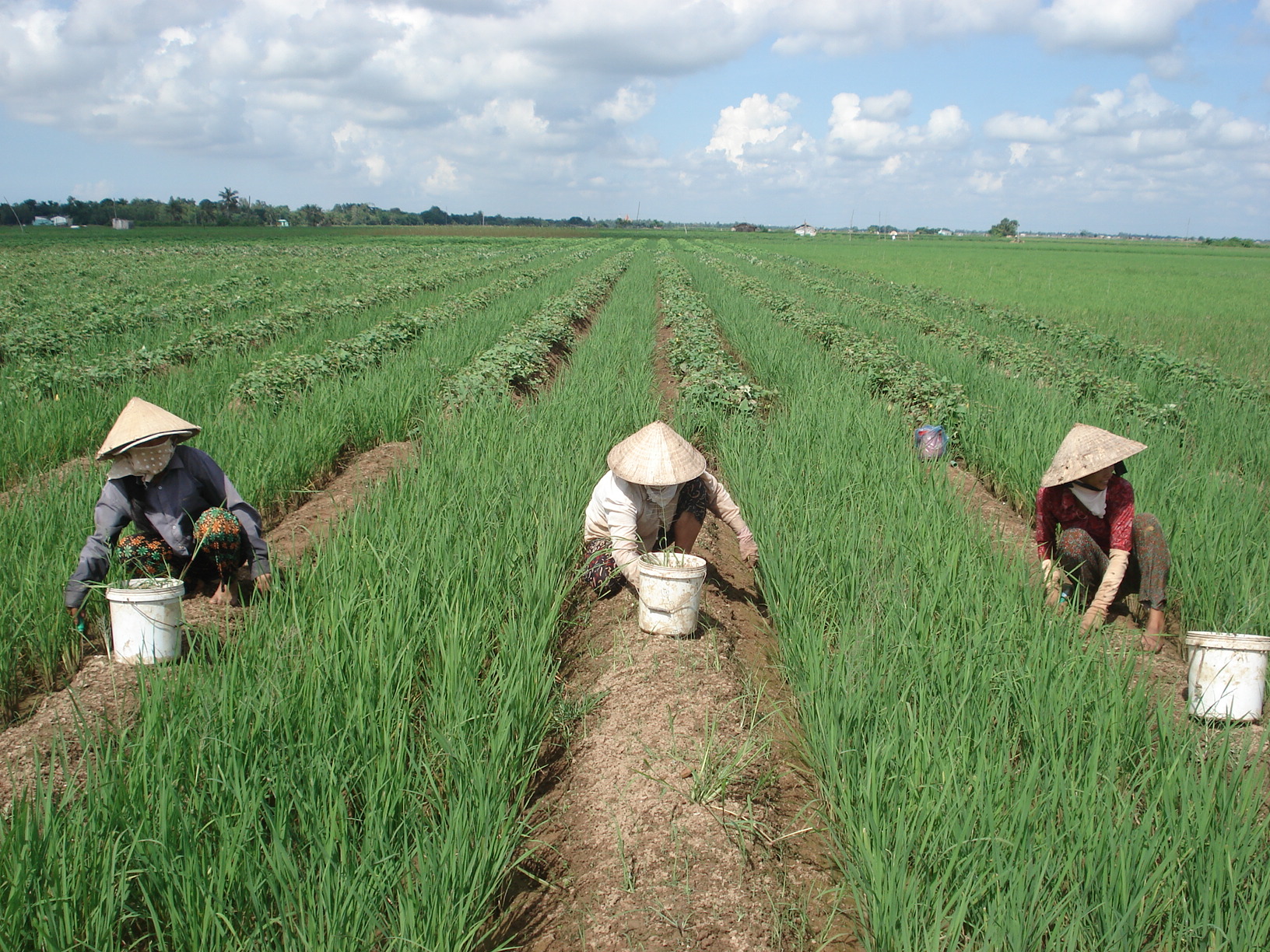
Supporting Cuba to advance their NAP process

Country background, Sustainable Development Goals and Paris Agreement
The Republic of Cuba is located in the Caribbean Basin. Havana has 15 municipalities, out of which six are located in its coastal zone, an area of vital importance for the sustainable and strategic development of the country. The Havana Coastal Zone is a highly important zone for tourism that is characterized by sandy beaches, three coastal lagoons, mangrove areas, and coral reef crests. It also includes the Havana Malecon (sea drive), a Cuban landmark, particularly the portion located in the Historic Centre that has been declared by UNESCO as a World Heritage Site. The Bay of Havana is another significant site given its economic and social importance because of its harboring, industrial and touristic activity. The Havana Coastal Zone is located in the region of Cuba most frequently hit by hurricanes of different categories and cold fronts of varying intensities. Studies undertaken show that this region is one of the most vulnerable areas in terms of extreme meteorological events and climate change impacts.
Since the 1990s, the Cuban Government has recognized the risks associated with climate change and engaged in efforts to address these risks in its environmental and development agenda. Cuba ratified the Paris Agreement on December 28, 2016 and submitted its Nationally Determined Contribution (NDC) on November 23, 2015. In the NDC, adaptation is considered the main priority and specific emphasis is placed on human health, reducing coastal zone vulnerability, recovering the mangrove areas, integrated water management, territorial planning and sustainable food production, as well as incorporating adaptation in all programs, plans and projects moving forward.
The Inception Workshop of the Third National Communication to the United Nations Framework Convention on Climate Change (UNFCCC) was held in February 2018. The main objectives and tasks identified are: to develop an inventory (base year 2016) of greenhouse gas emission and reduction; conduct a comprehensive assessment of climate change impacts on pilot areas as study cases. Formulating the Adaptation Plan for the Havana Coastal Zone is an opportunity to materialize the priorities contained in “Tarea Vida” and creates synergy with and complements the analysis and results of the Third National Communication. The Adaptation Plan for the Havana Coastal Zone project will contribute towards closing information and knowledge gaps, strengthening technical and technological capacities, designing adequate and effective adaptation measures that are fully incorporated into the development plans, and training and sensitizing relevant actors on climate adaptation. Together, these actions will increase climate resilience in the Havana Coastal Zone.
The 2030 National Plan for Economic and Social Development: Strategic economic axes and sectors, ratifies the political will and strategic vision to address climate change, while designing a pathway towards sustainable development. This plan highlights the implementation of policies for effective risk management and climate change adaptation in the country as well as the need to effectively implement programs and actions to address climate change impacts, focusing on adaptation measures, vulnerability reduction, mitigation, and the introduction of systemic and cross-sectoral strategies. It also states the need to improve the Civil Defence System for risk reduction on the basis of comprehensive risk management with the active involvement of the communities and local governments in order to improve the resilience of human and ecological systems, all of which is in line with the Sustainable Development Goals (2030 SDGs) and the 2015-2030 Sendai Framework for Disaster Risk Reduction.
How has the NAP-GSP supported to date?
|
Support with the NAP roadmap and identifying new stakeholders
|
Conduct consultation processes at national and at territorial level to identify new stakeholders, project opportunities (consistent with National Development Plan, National Environmental Strategy, State Plan for Tackling Climate Change and NDC) and their review, with a gender approach, thus ensuring a broad participation of women.
|
|
Produced an assessment and identified entry points for the NAP process
|
Conduct institutional assessments and diagnosis of the capacities of the National Designated Authority and other institutions linked with its work on matters related to the GCF. Creation of a technical unit, which will support the work carried out by the National Designated Authority, in particular by reviewing and screening programs and projects. The eventual Readiness Proposal project will design a Country Program that will include a plan to work with the Fund and involve new actors relevant to climate change financing issues.
|
|
Helped build capacity and facilitated access to additional climate finance
|
NAP GSP supported Cuba is developing it’s GCF Readiness and Preparatory Support/Initial Plan in Cuba, an initial plan to create and strengthen Cuba’s institutional capacities to access and engage with the Green Climate Fund. With the support of implementing partner UNDP, Cuba submits a revised Readiness Proposal for “Adaptation Plan for the Havana Coastal Zone” to the Green Climate Fund in June 2019. The objective of this project is to formulate an Adaptation Plan for the Coastal Zone of Havana, which considers the medium- and long-term climate risks and specific vulnerabilities and integrates adaptation measures and investment decisions into the development planning.
|
New project to increase coastal resilience in Cuba - February 25, 2020 - The project intervention area is located within the Sabana-Camagüey archipelago, north of the central region of Cuba. It covers the fifteen coastal municipalities of the Villa Clara, Sancti Spíritus, Ciego de Ávila and Camagüey provinces.
Cuba and the Caribbean work to increase the resilience of the regional SAT - January 16, 2020 - Specialists from the National Risk Assessment Group of the Environment Agency (@AMA_CUBA) carried out a South South Cooperation exchange mission with the Caribbean island of Saint Lucia, developed in the National Emergency Management Organization (NEMO).
CITMA and UNDP value cooperation for more than 25 years - September 11, 2019 - This was a new opportunity for Ms. Maribel Gutierrez, on behalf of UNDP, to highlight that CITMA is a very important partner given its high scientific potential and state commission at national and territorial level. Today the projects under the attention of CITMA represent 47% of the total portfolio approved by UNDP in Cuba, approximately 56 million USD.

Supporting Argentina to advance their NAP process
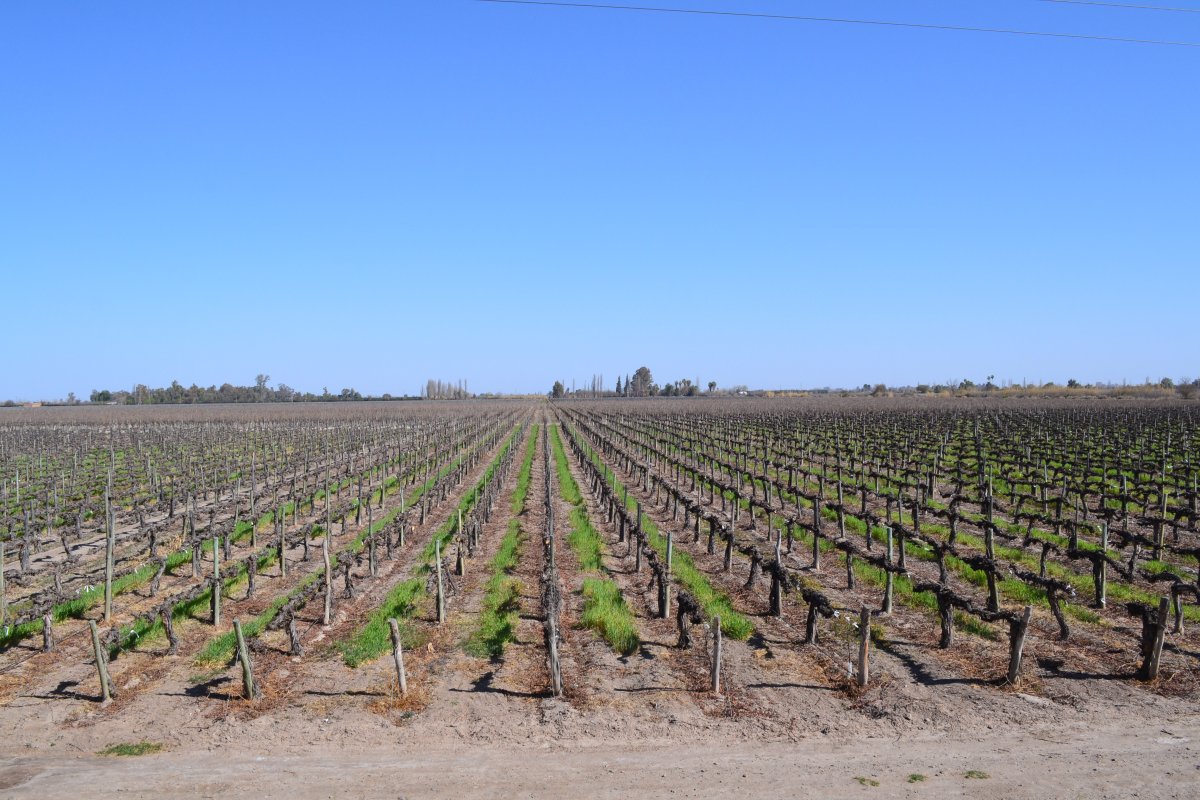
Country background, Sustainable Development Goals and Paris Agreement
In Argentina, changes in the climate have been observed since the second half of the past century and, according to the projections of the climatic models, these changes would intensify in this century. These changes have already caused impacts on natural and human systems. In most of the non-Patagonian Argentina there was an increase in temperature of up to a half degree between 1960 and 2010, with smaller increases in the center of the country. There was also a change towards more frequent intensified rainfall in much of the country, which resulted in more frequent floods caused by an inappropriate occupation and use of space that generated areas with high exposure and the inadequacy of the water works that were planned for weather conditions that are no longer valid. In the west and more noticeably in the north, the dry periods of winter have become longer. This has generated problems in the availability of water for some populations, created more favorable conditions for grassland fires and greater stress on livestock.
Argentina has submitted two National Communications to the United Nations Frameworks Convention on Climate Change (UNFCCC), laying out the actions that the government has already taken and the analytical basis for its policy response to climate change, as well as its commitments to take future actions within an official international framework. The National Program for Climate Change Impacts was created with the purpose of developing a national strategy for the better understanding of Argentina’s vulnerability to climate change impacts and for the development of adaptation measures to climate change. Among its functions is the implementation of studies related to the global climate change impact on the various climates of Argentina, elaboration of national climate change adaptation measures, coordination of climate change actions with other related national programs such as the one for desertification prevention.
The United Nations Framework Convention on Climate Change (UNFCCC) established the Global Process of the National Adaptation Plan (NAP) as a way to facilitate adaptation planning in developing countries. According to this strategy, Argentina considers that it is essential to take into account the adaptation aspects in the design and implementation of policies and programs. In its National Determined Contribution (NDC) -revised in 2016 and presented at the COP22 in Marrakesh-, Argentina has committed to articulate actions and initiatives related to adaptation to climate change through a systematic and participatory National Adaptation Plan. For the particular case of Argentina, several factors hinder the development of the NAP process, which are of legal and geographical nature. In the first case, the objective of carrying out the process in a participatory manner obliges the political area at the national level to make economic efforts to ensure the full participation of all provincial representatives and to support them in parallel processes of formulating provincial plans.
How has the NAP-GSP supported to date?
|
Supported the vulnerability assessment and the NAP formulation
|
Within the work of National Cabinet in 2017, a participatory process was initiated to define priorities and to define which studies are the most important ones to carry out for the vulnerability analysis proposed in the project eventually outlined in Argentina’s Readiness Proposal that was developed in 2018.
|
|
Produced a project document to identify entry points for the NAP process |
With support of the NAP GSP, Argentina identified technical capacity needs, either at the national and sub-national level or at the sectoral level. With the Global Support Porgramme, Argentina drafted a project document that sets the basis for an adaptation strategy and includes tools for decision making and planning of the NAP process, and mechanisms to include local stakeholders, community‐based organizations, non‐governmental organizations and the private sector.
|
|
Helped build capacity and facilitated access to additional climate finance
|
In January 2019, the GCF approved Argentina’s Readiness Proposal “Adaptation Planning support for Argentina through UNDP.” The NAP project will facilitate integration of climate change adaptation into existing strategies, policies and programs and in this way facilitate the assessment and reduction of vulnerability to the adverse effects of climate change. The Argentinean government will advance adaptation planning at a national, sub-national and sectorial level. The NAP Readiness will raise awareness on adaptation potential and needs at national, sub-national and local levels, as well as disseminate adaptation initiatives being carried out in the country and their respective impacts.
|
Climate Change and Environment in the Autonomous City of Buenos Aires - 1 October 2019 - Workshop organized by the Ombudsman's Office of CABA together with OHCHR, UN and UNDP in Argentina.
Sustainable Land Management NOA and Cuyo - 3rd. Call for projects - 2 March 2020 - Third call for projects for sustainable land management and comprehensive management of water resources in NOA and Cuyo.
Evidence for policymaking in Argentina, there we go! - 26 March 2020 - Evidence plays a fundamental role both in understanding our problems and in designing, implementing and measuring the impact that laws have on our day-to-day life.
